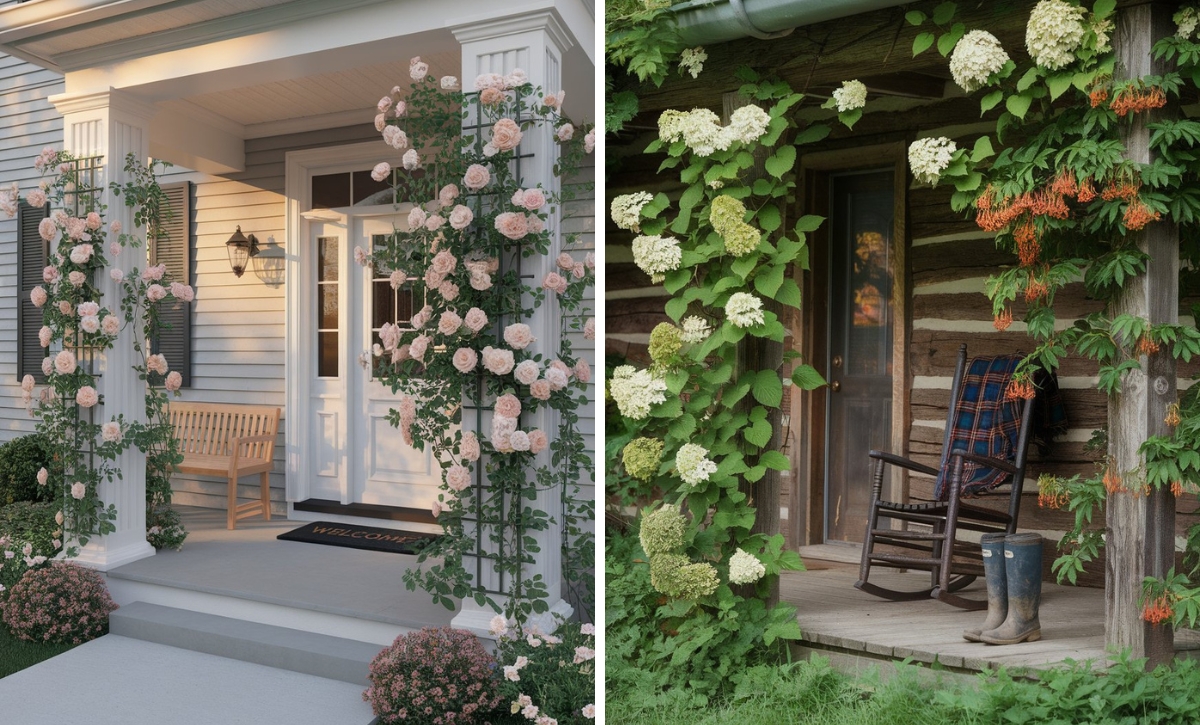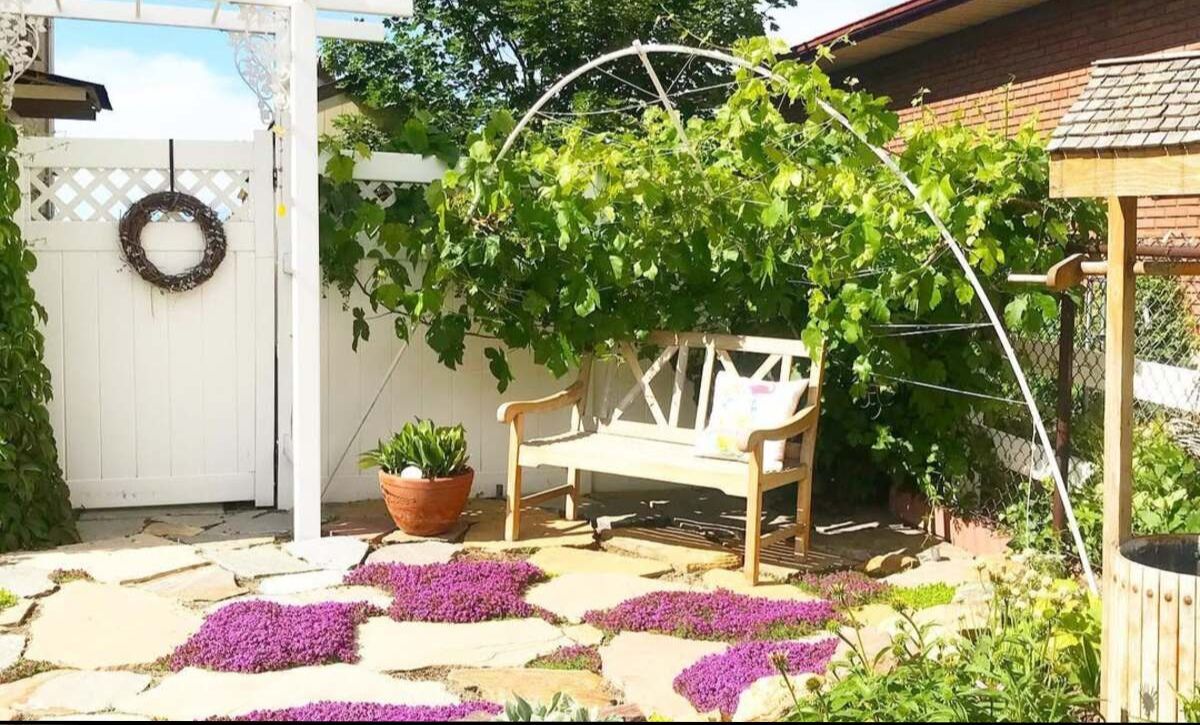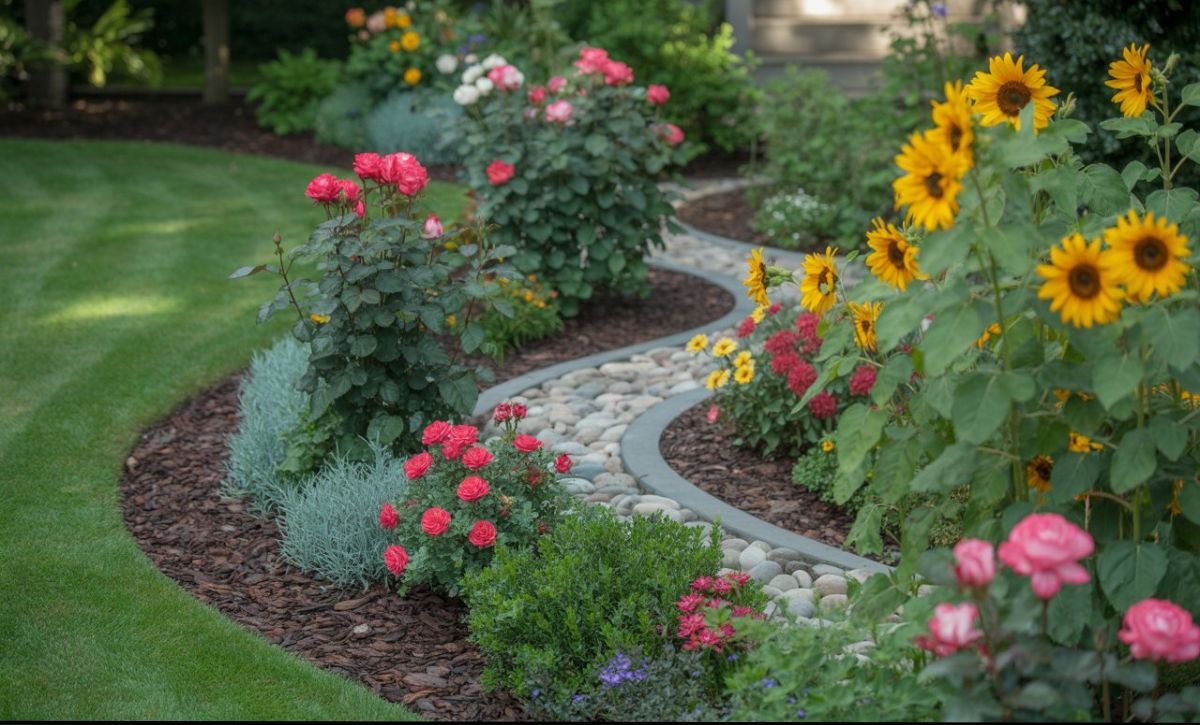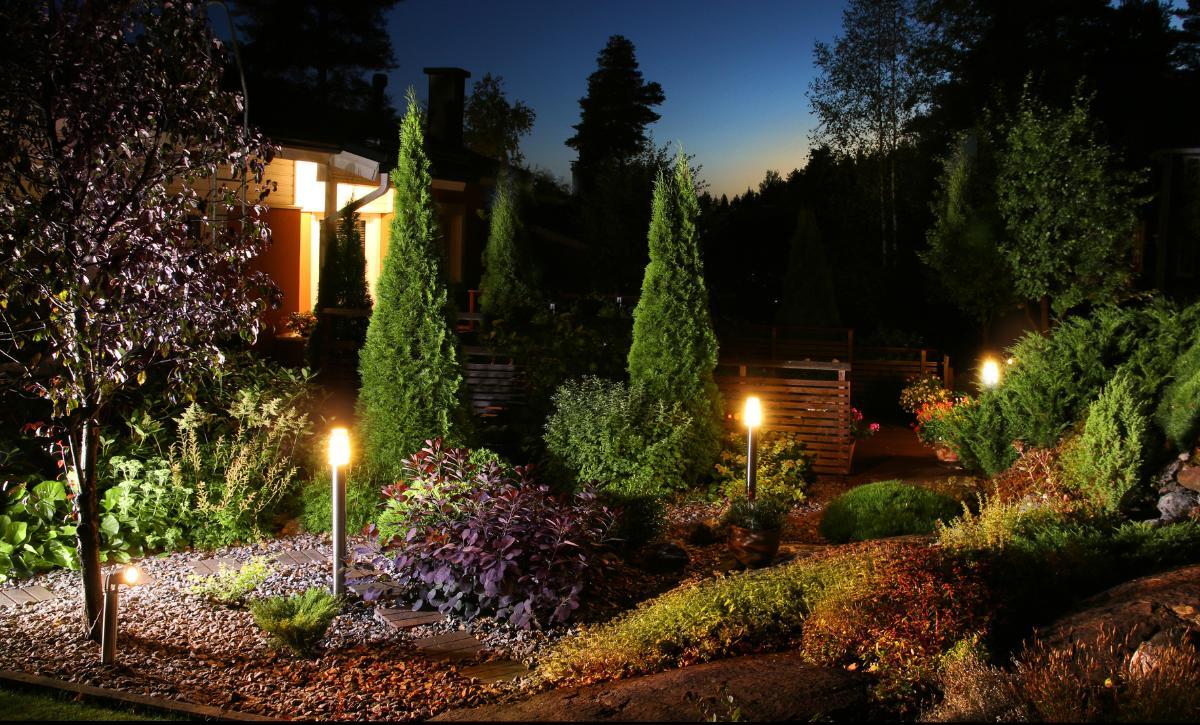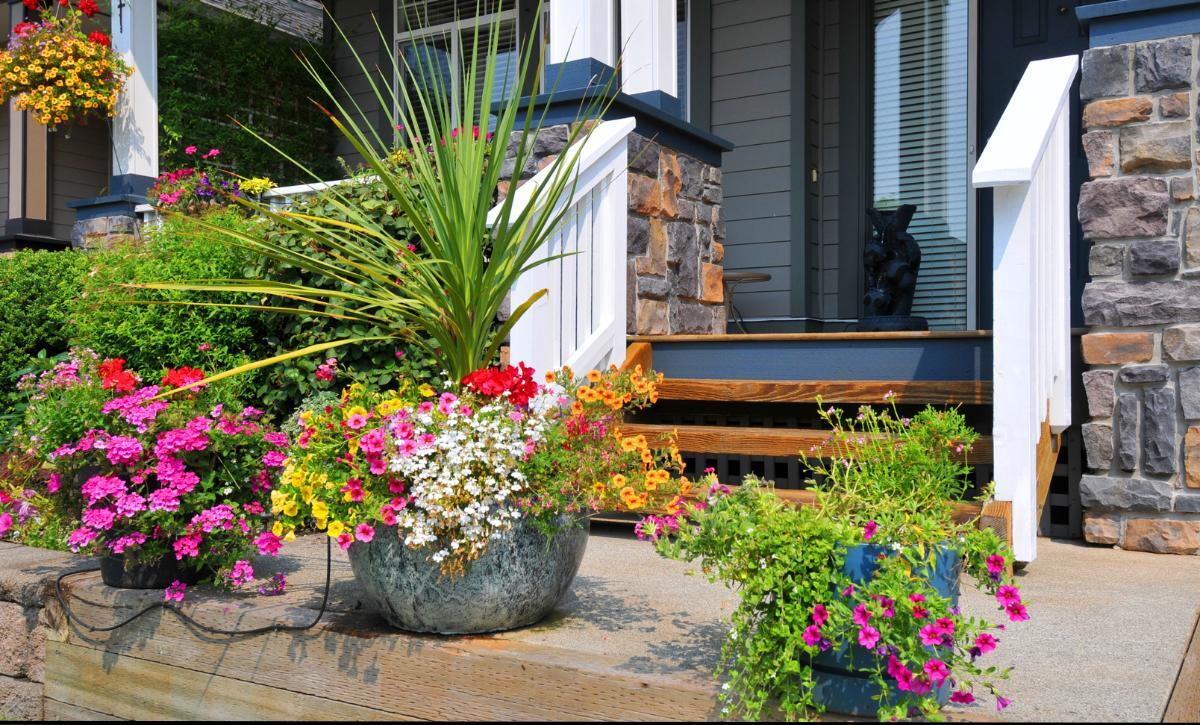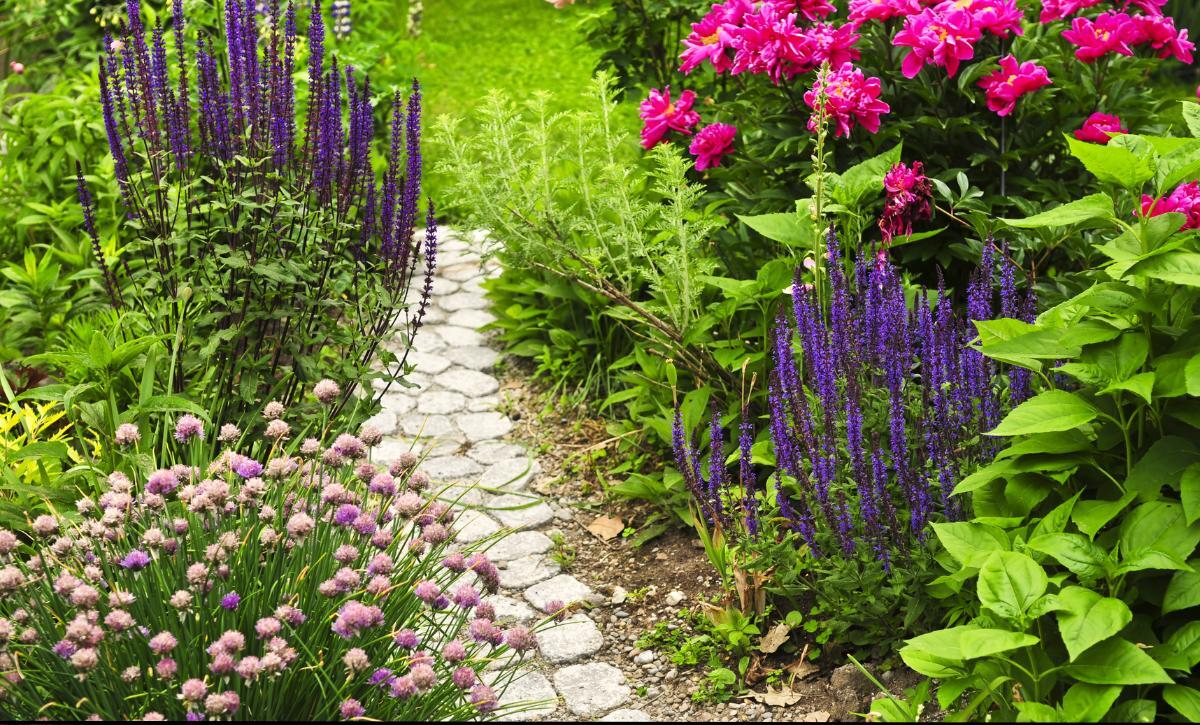Growing herbs in your own garden has so many advantages that you would probably dedicate most of the free yard space to them.
They are beautiful garden decor that can please your eyes not only for one season but for many years. Unlike flowers and decorative plants, their maintenance is super easy. In addition to their healing properties and the possibility to include them in the meals, they are also a great pest boundary.
The best spot of your perennial herbs depends on the herb kind you have chosen to grow. Luckily, this doesn’t define the space size. You can successfully take care of perennial herbs directly in the ground of your yard or in containers and flower pots on the porch or the windowsill.
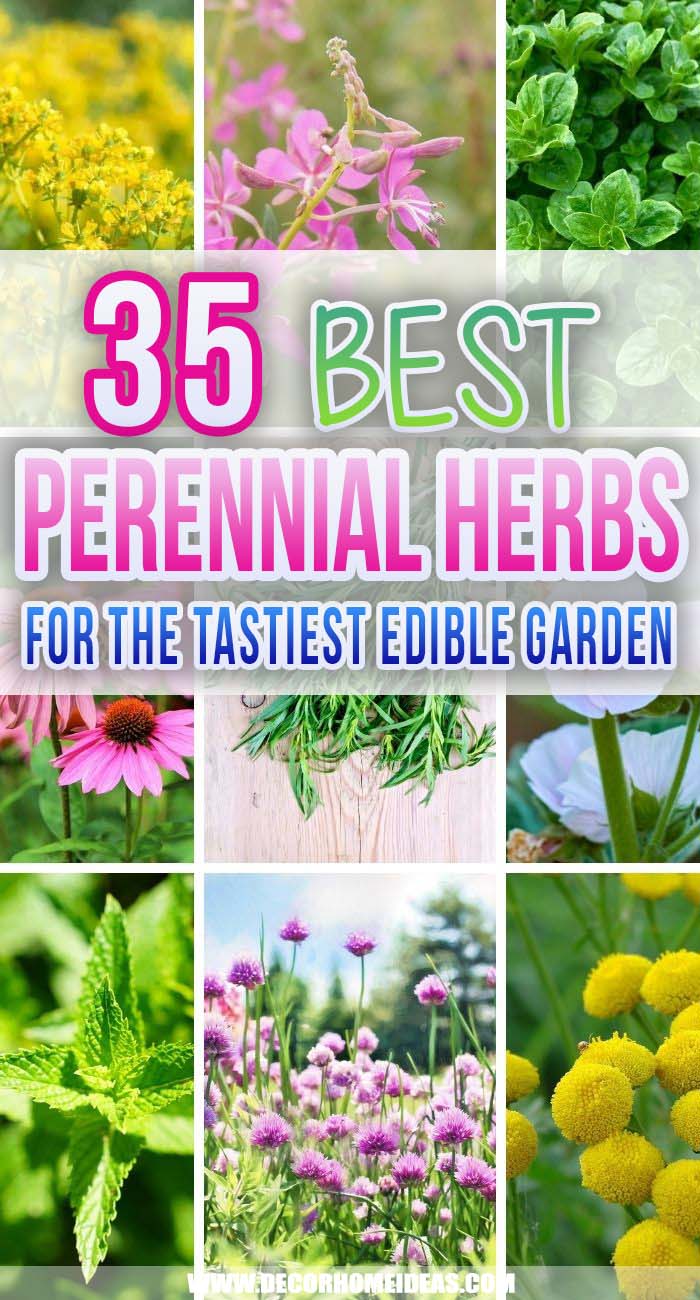
The important thing to remember is that different perennial herbs have different growing needs, and will thrive in different settings. It is vital to choose the right plants for the right places.
But before you start practicing your green thumb, let us guide you through the 35 perennial herbs that are the most useful, easy to grow and edible.
1. Alfalfa
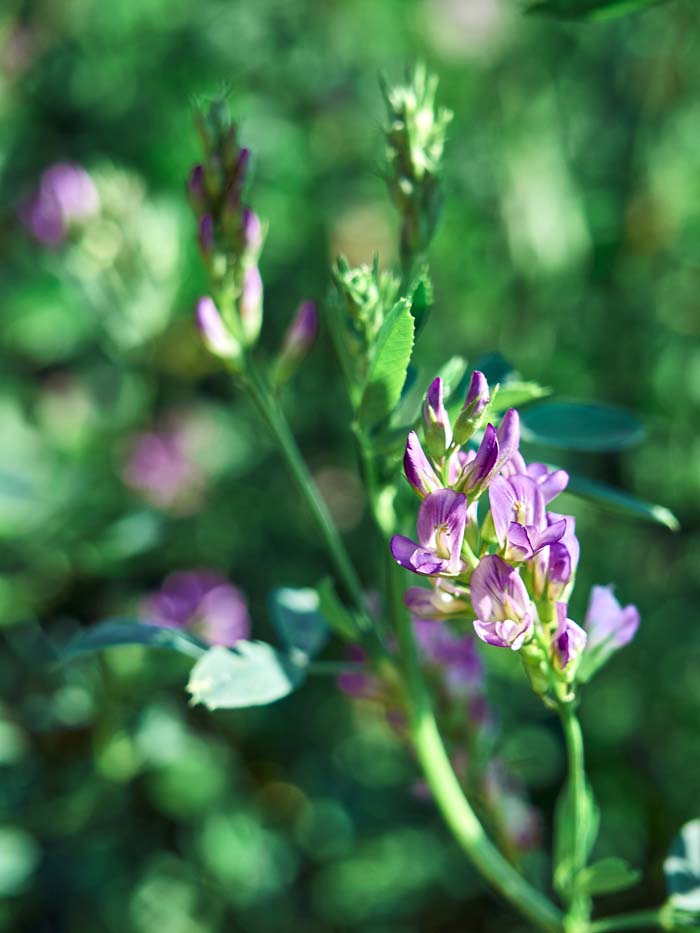
The Alfa alfa is a delicate perennial herb that is also valued as fodder because of its high protein content. Besides its usage as animal food, its seeds can be consumed by humans when they have germinated.
The herb likes fertile and oxygen-rich soil.
2. Bay Laurel
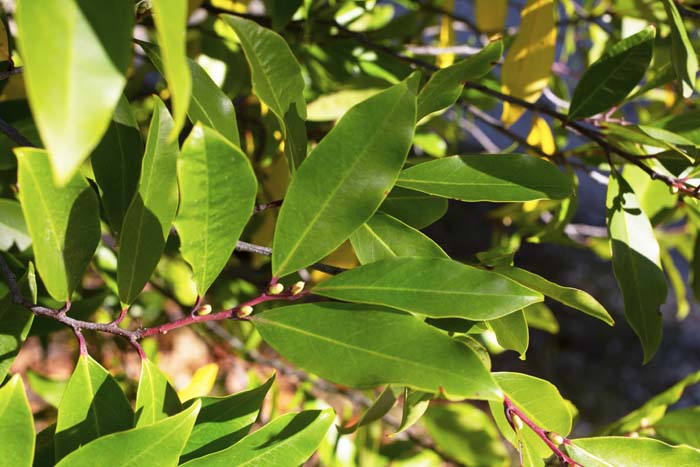
The leaves of this herb can be used both fresh and dried. Added to a pot meal, its taste cannot be mistaken.
Taking care of it is easy- watering from time to time and well-draining soil. A couple of years are needed to form it as a shrub or a short tree- the perfect decorative addition to the garden.
3. Bergamot
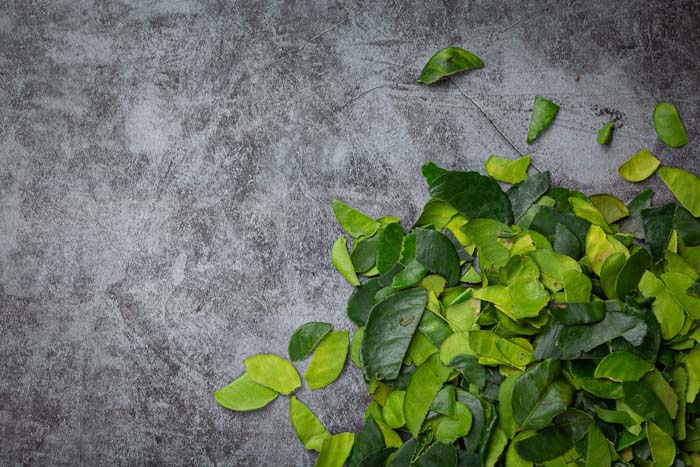
This herb is mostly used for tea. You may be surprised to understand that it can be also added to salads and drinks.
The Bergamot likes fertile soil and regular watering. Apart from its repelling characteristics, it is also very beautiful and exotic.
4. Catnip
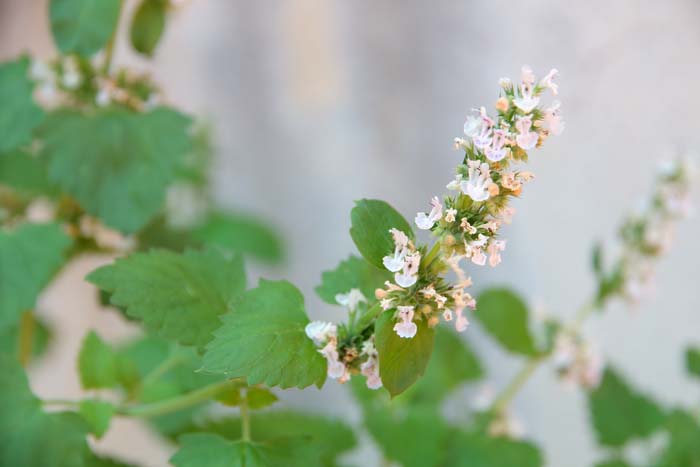
A repellent, an attraction of felines but also a seasoning for salads and cooked meals- this is the Catnip. A not that popular fact is that it is also a salad seasoning because of its mint-like flavor.
This herb easily grows as a wild plant so clearly, maintenance is easy-peasy. In the garden, it will fight against ants and flea beetles and the extract as a repellent against insects.
5. Chicory
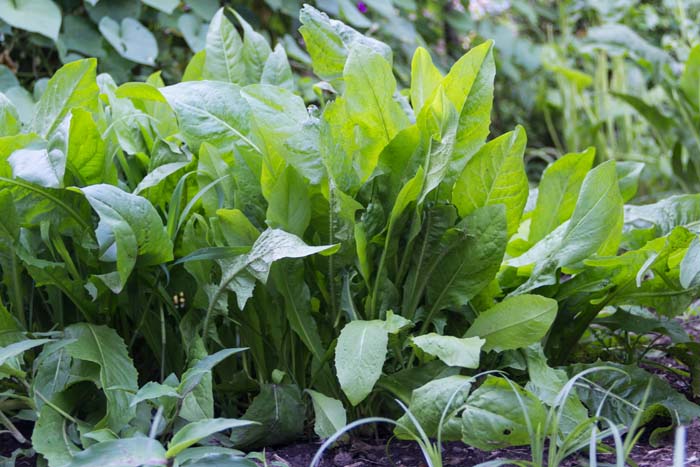
Chicory likes the sun and the well-drained soil. The leaves are short but many and are often used as a salad addition in the culinary. Their bitter taste makes the dish exotic.
The root is another part of the herb that is edible. When boiled in water it becomes a vegetable for soups and stews.
6. Chives
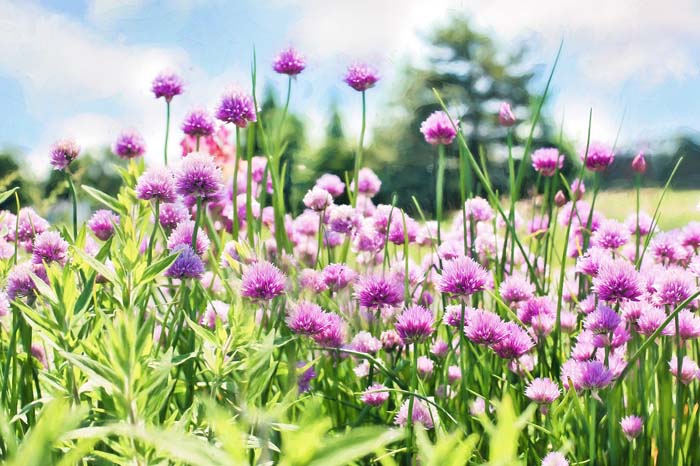
Chives belong to the onion family and so have a strong typical aroma that repels pests. The leaves and the onions on the roots taste pleasantly without any bitter post taste.
The bloom colors vary from white to purple. The wild onion combines well with many dishes that contain eggs and cheese.
It likes sunny spots and although it is a drought-resistant herb, regular watering will let the plant thrive better.
7. Clover
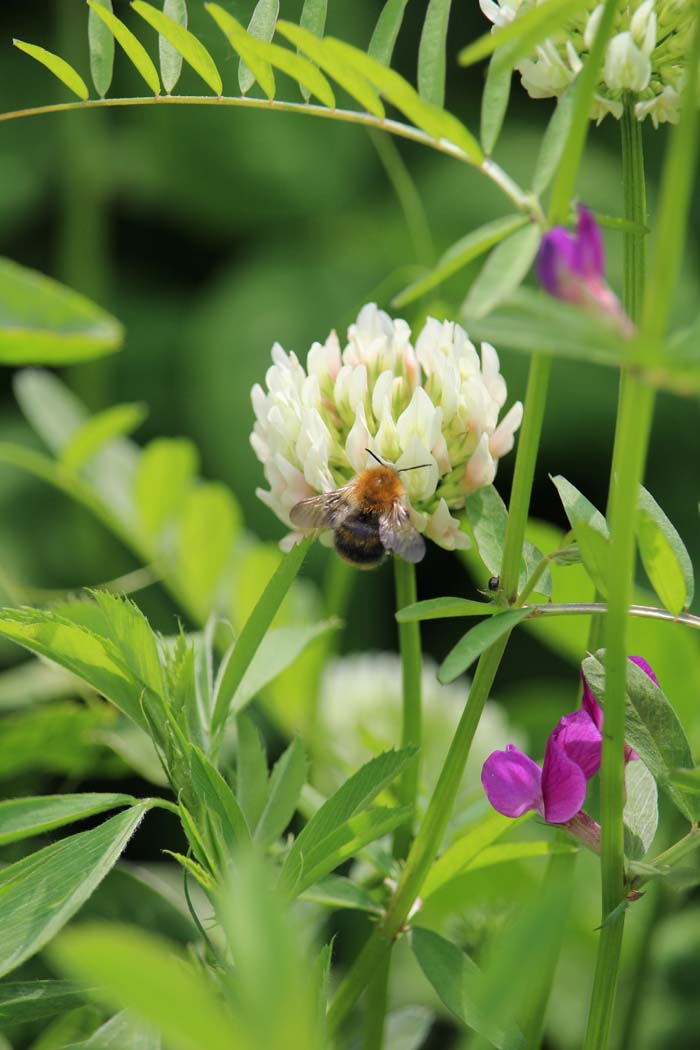
Many people prefer seeding clover to grass in their lawns because it requires less maintenance and is also very soft. What you may not know is that the Clover is also a culinary herb, a substitute for spinach.
The clover likes sun and medium temperatures.
8. Echinacea
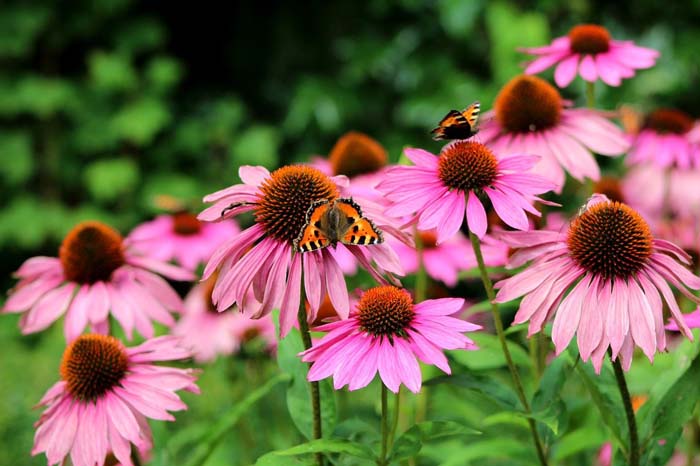
This wildlife attracting herb grows beautiful blossoms that peek out from the grass. And as most people grow the Echinacea as an ornamental flower, they don’t know its magical characteristics in medicine.
This value is appreciated in Western herbal medicine for immune system stimulation, anti-bacterial and anti-inflammatory. The Echinacea is not pretentious to the soil type but will thrive better when organic and mineral fertilizing is done.
9. French Tarragon
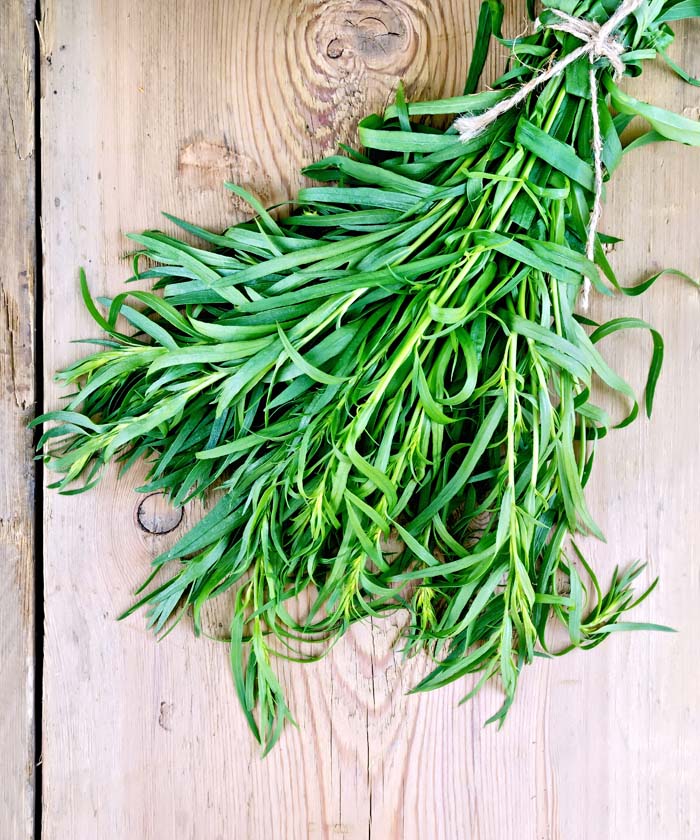
The leaves of the Tarragon are very aromatic so they are preferred as an addition to a fresh salad, fish and eggs. They are also a source of vitamine C, carotene and rutin.
There is a French and Russian Terragon which can be recognized by the leaves decoration and by the smell. While the leaves of the Russian Terragon are matte green, the French kind dazes with its scent.
Before planting your perennial Terragon, you should prepare the soil. Add biofertilizer and cultivate the ground in depth.
10. Garlic Chives
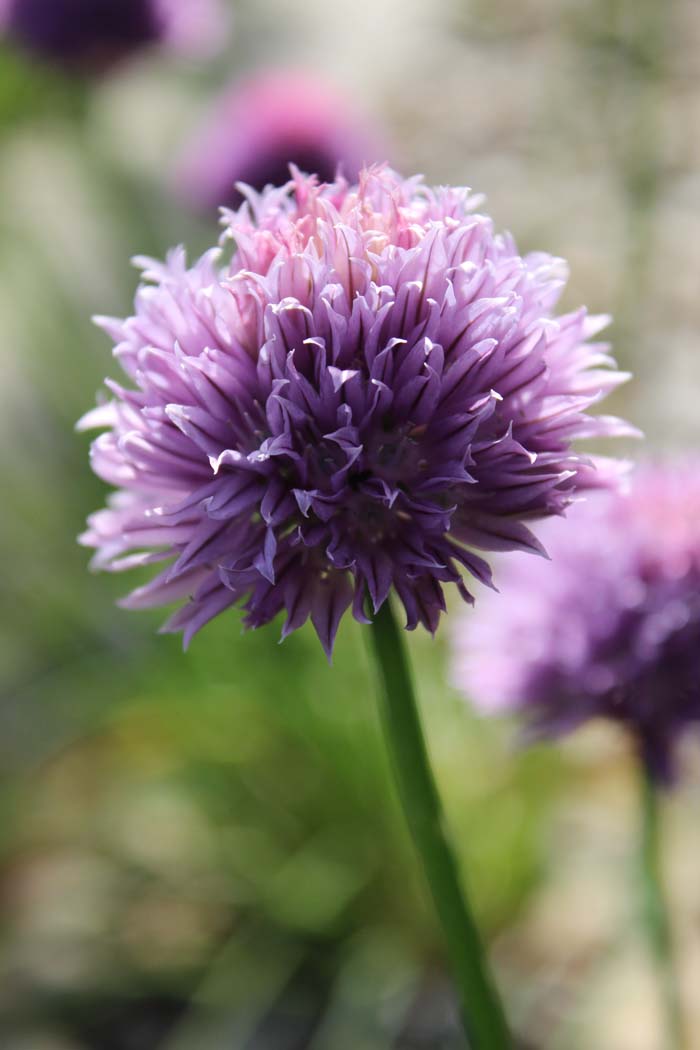
The growth of Garlic Chives is very similar to the Chives.
As the name prompts, the difference comes from the taste. Full sun is the best condition for growing your own wild garlic.
11. Good King Henry
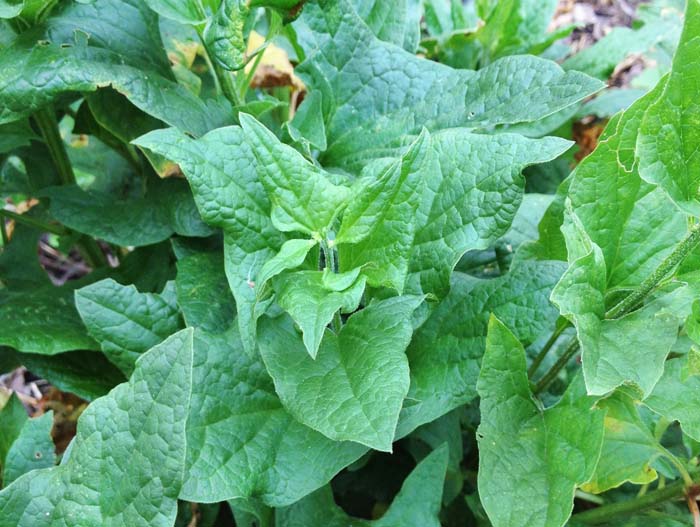
This herb has antibacterial, analgesic and sedative effects and so is widely used in natural medicine. The Good King Henry easily grows in rocky and high places. In the garden, people often mistake it with a weed.
In the culinary, the herb is mostly used for cooking sweets.
12. Herb Patience
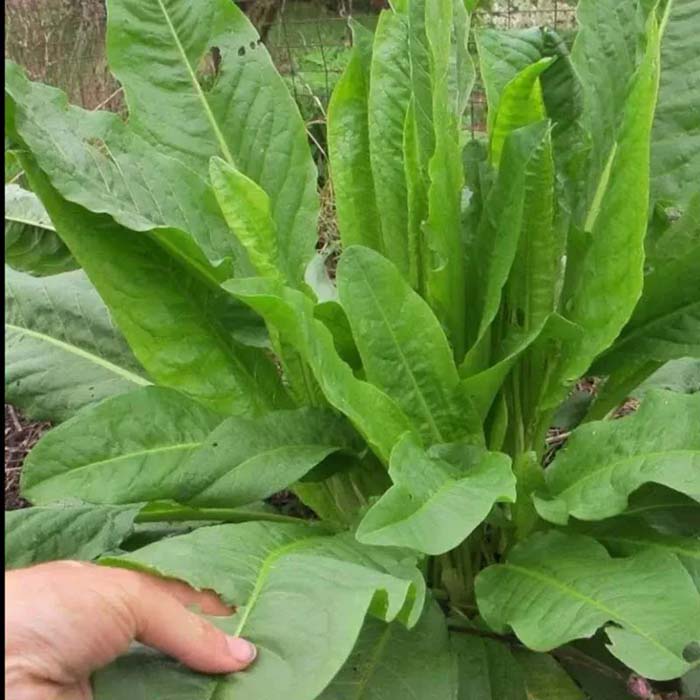
The leaves of this perennial herb are mild and tasty and therefore many people prefer to replace the spinach with it.
Herb patience can be grown easily and is an important part of the garden because of its importance for the wildlife. To produce large leaves, the Herb Patience requires regular watering and a place from the garden dedicated only to it.
13. Hyssop
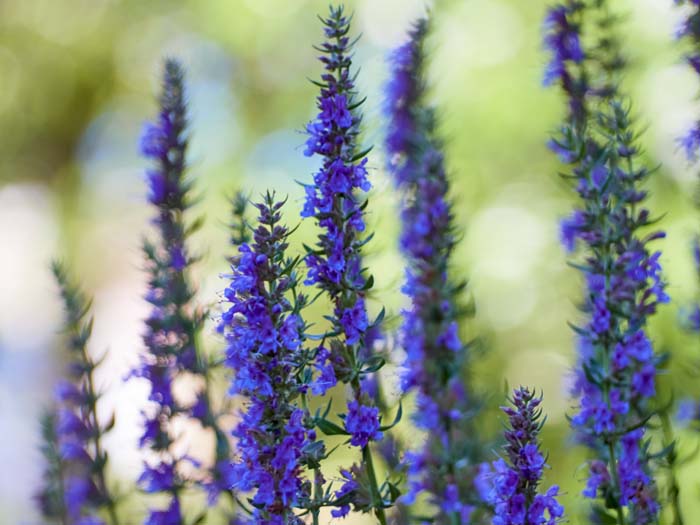
The Hyssop acts as a natural repellent and an attraction for beneficial wildlife. One of its most important applications is as a trap crop of cabbage white butterflies.
The herb likes sun and well-drained soil that is neutral to alkaline. Recently its is mostly used in medicine. When applied in the culinary, it gives the dishes a pleasantly bitter and gingery taste.
14. Lavender
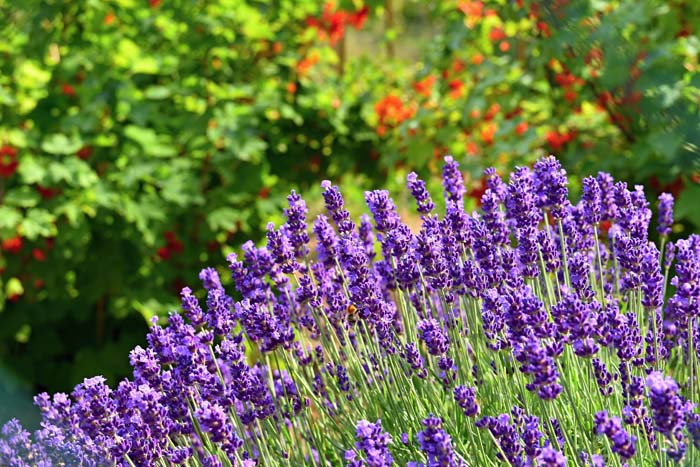
Lavender is a natural repellent and a fantastic accent to any garden because of the magical color combination of purple and green. Usually, it is recognized for its medical and cosmetic properties. However, there are a few culinary usages you may want to try out.
The lavender is also a bee-attracting plant so if you have your own beehives, this plant will facilitate this hobby. It likes well-drained soil and sun- at least 6 hours a day!
15. Lemon Balm
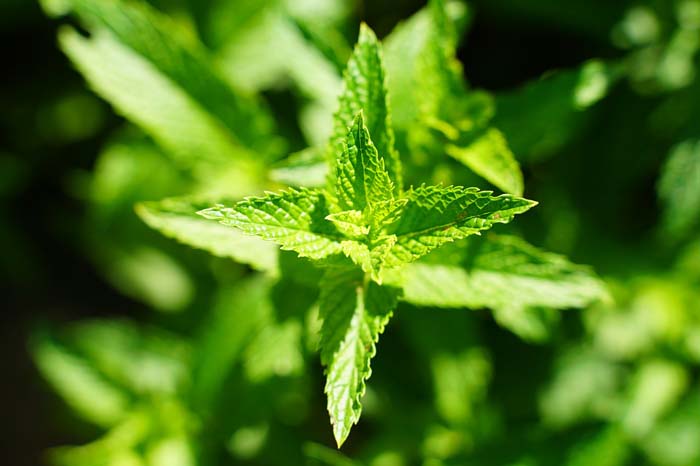
Lemon balm is similar to the mint when it comes to its look and growing conditions. This is not surprising because they belong to the same herb family.
The lemon balm is rich in nectar and honeydew that attracts bees. It prefers humid and light soil but it is also tolerant to different ground.
16. Lovage
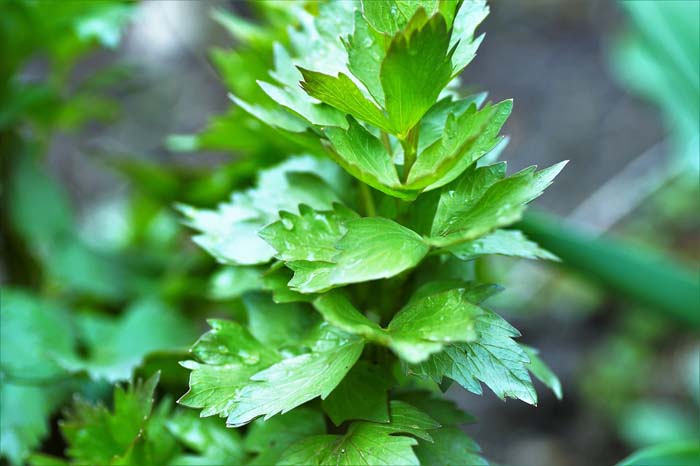
The taste of Lovage reminds me of Celery. In culinary it is mostly used in stews, in fresh and dry conditions.
Taking care of it depends on its place. If it is in shade- don’t water that often. On the contrary, when it develops at a sunny spot, watering should be increased.
17. Marjoram
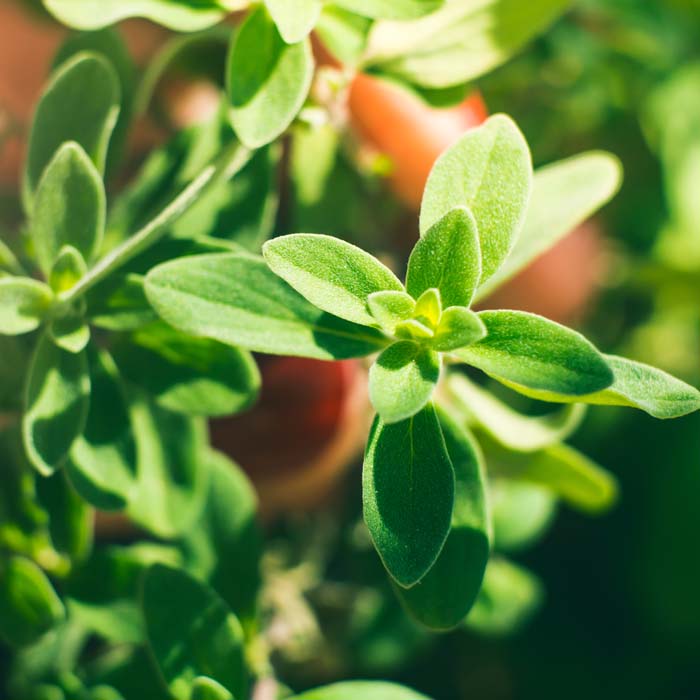
Usually mistaken with the Oregano, the Marjoram is less strong and aromatic. In the culinary, it is used freshly cut and added at the end of cooking.
It has a number of healing applications connected to the oil extract. It can be added to bio repellents, anti-bacterial detergents and also to hand-made soaps.
Growing it requires a well-lit, warm and protected place. The soil must be well-drained and rich in mold and calcium.
18. Marshmallow
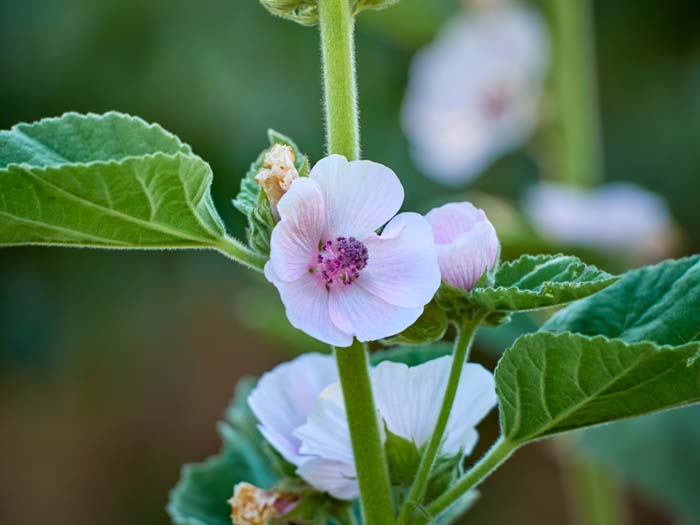
The part of this herb that is used in the culinary is the leaves. They can be used to thicken soups or as an ingredient of sauces.
The leaves have a mild taste in a raw condition and therefore some people love adding them to the fresh green salads in summer. The root is another edible part of this perennial herb. When dried and ground to powder, it is stirred to a paste and roasted to become the favorite “marshmallow”.
19. Meadow Sweet
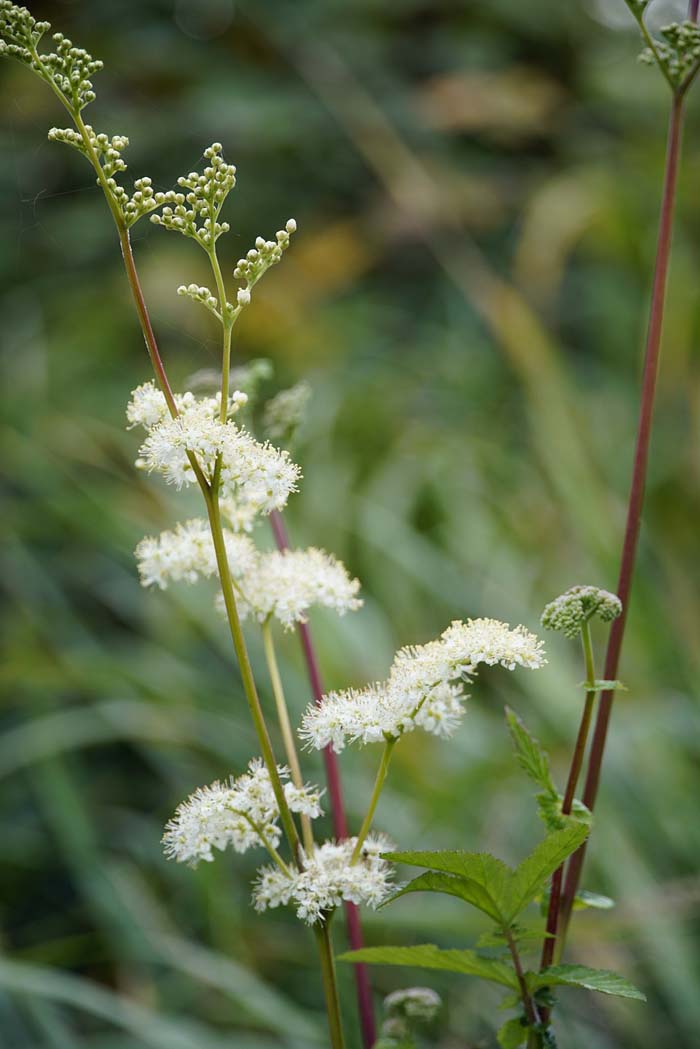
Did you know that the flower head of Meadow Sweet is an important ingredient of aspirin? Well, yes, it contains salicylic acid which has an anti-inflammatory effect.
The same effect has the tea brewed from young leaves, flowers and roots, of course in normal quantities. It likes moisture but also well-drained soil. It is tolerant to shade.
20. Mint
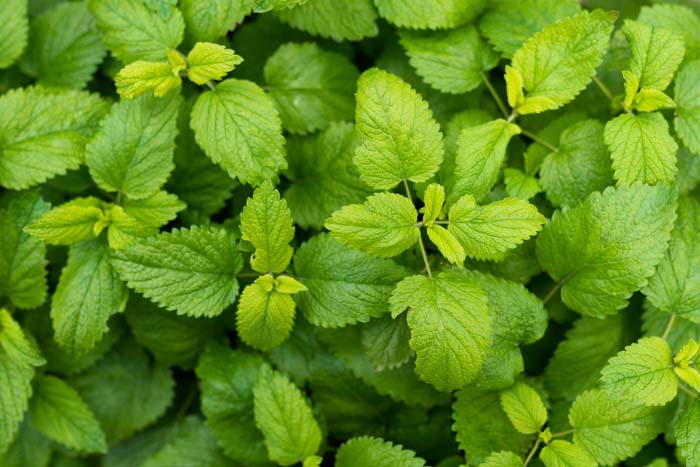
Mint is probably the best-known perennial herb. Its calming characteristics make its usage in medicine valuable. As far as gardening is concerned, it is an easy plant to be grown because of its unpretentious nature.
As an edible plant, the mint is often used in Mediterranean culinary and also as a tea for calming. The Mint likes humid but well-drained soil. Most of the Mint kinds are tolerant to shade.
Depending on its flavor and scent, the varieties of Mint offer lemon, apple, chocolate hues in addition to the traditional spear and peppermints.
21. Oregano
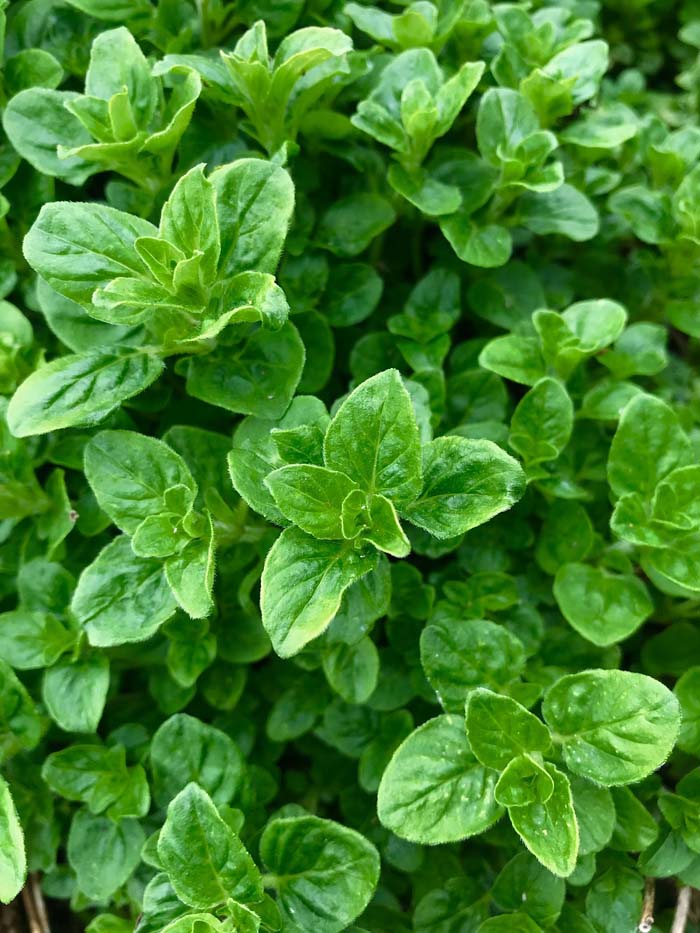
Oregano is another Mediterranean herb that makes the summer dishes and Italian food so tasty! Known also for its pest repelling properties, the Oregano thrives easily when planted in the ground and in a pot.
If you want to grow it in the garden, make sure that there aren’t other plants next to it because its roots grow horizontally. The herb is relatively unpretentious when it comes to the soil type but it will feel best in a well-drained, moderately humid and sandy ground.
22. Parsley (Biennial)
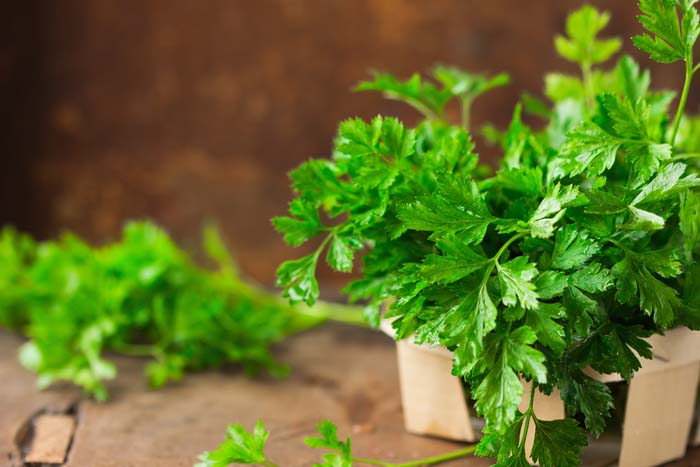
This is a biennial plant but the treatment is the same as a perennial. The plant lasts for a few years but it doesn’t disappear because it self-seeds.
Parsley is tolerant to shade and sun so finding a spot to grow it is easy. However, gardeners often plant it near tomatoes, carrots and roses because it repels pests and attracts beneficial creatures.
23. Roman Chamomile
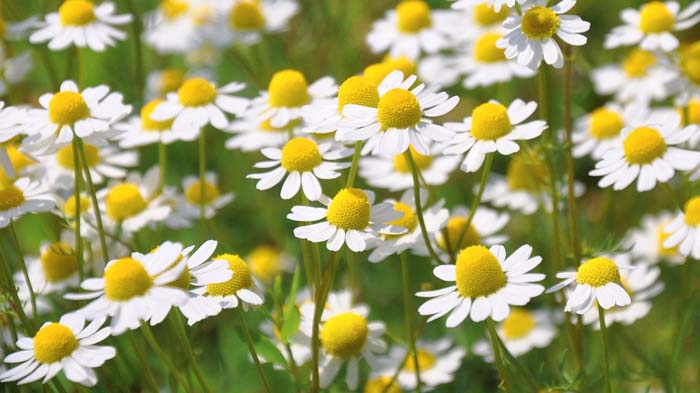
Roman Camomile is a wildflower and from that, it becomes clear that caring for it is down to a minimum. Known in medicine for its anti-bacterial and healing properties, the Camomile is also used as a seasoning.
Its repelling characteristics are valid as a growing plant and as a dried substance.
24. Rosemary
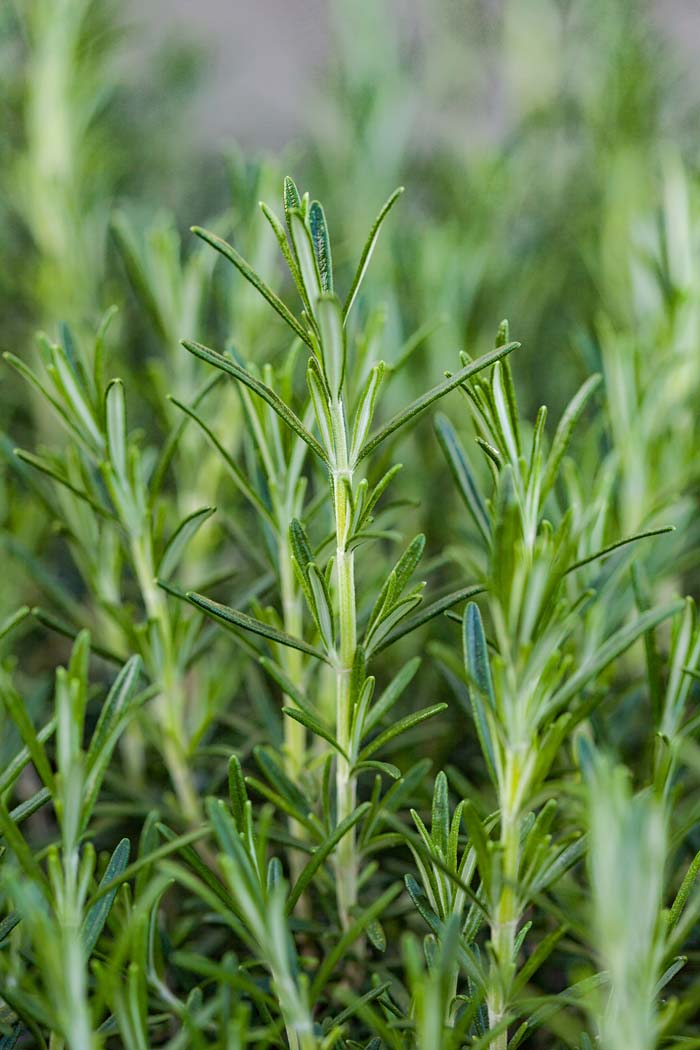
Rosemary is a traditional culinary addition. Having it freshly grown in your garden can also become a tradition if you follow this advice. It likes sun and free-draining soil. It grows quite tall and can be formed as a shrub or a short tree.
It attracts beneficial insects so some people prefer planting it next to vegetable plants like tomatoes that will take advantage of this.
25. Rue
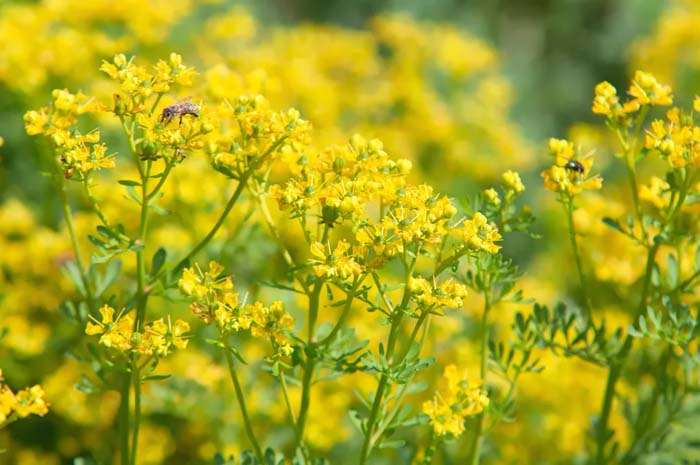
The major usage of Rue is as a repellent. Otherwise, it can be also an edible plant but in moderate quantities, as it becomes toxic in larger quantities.
Some people add the dried flowers to lavender and make bags to repel moths from the clothes. When boiled for tea, its taste reminds of an orange.
via Evgeniya Vlasova
26. Sage
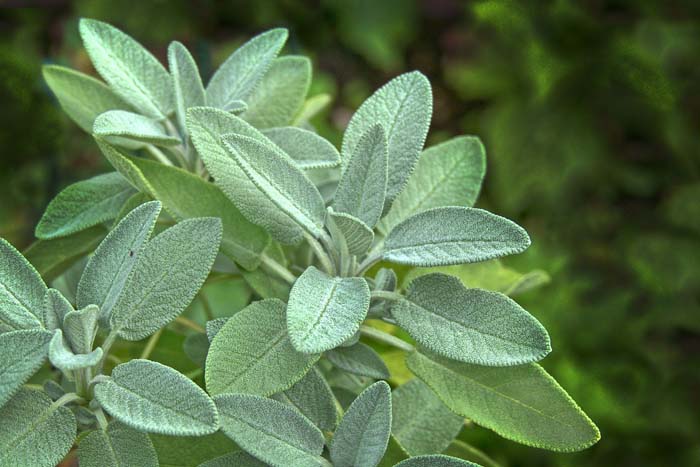
Sage attracts honeybees and pollinators and gardeners appreciate its contribution to the fruit and vegetable garden. It prefers well-drained soil and can withstand drought and high temperatures.
Most of the time people know the Sage for its medicine usage but it is also a unique culinary addition.
27. Salad Burnet
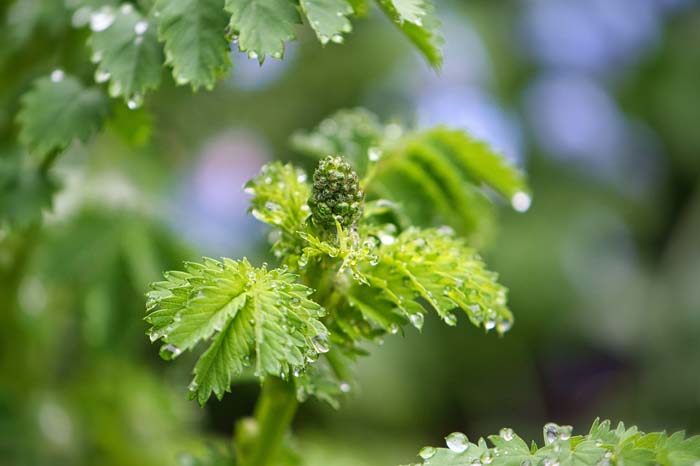
This Mediterranean herb and tolerant to almost any environmental condition. The herb belongs to the rose family and is often used against erosion, as a green salad and as a seasoning to vinegar and sauces.
The Salad Burnet is tolerant to shade or full sun as long as the pH of the soil is 6,8. When you see dry leaves, clean them to let the new ones appear.
28. Sorrel
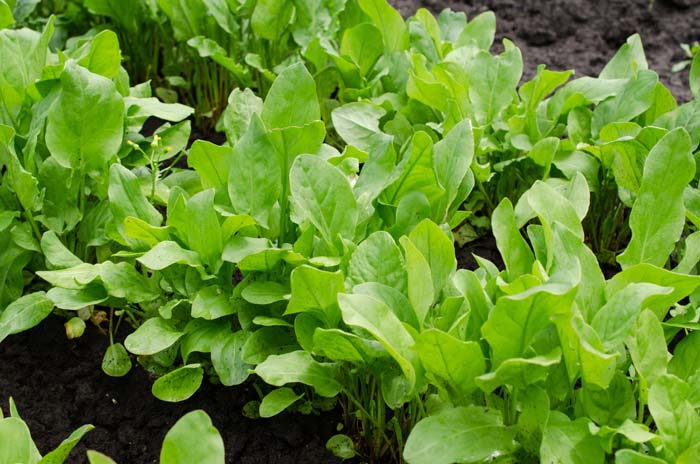
There is a perennial herb for the shadiest spots of your garden and that is the Sorrel. It reveals short but numerous leaves that taste like lemon.
When added to the fresh salad, be careful with the amount because of their oxalic acid content.
29. Sweet Cicely/ Anise
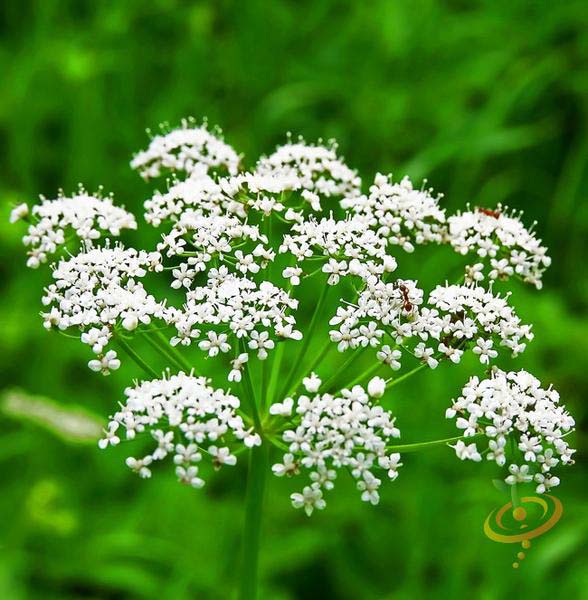
If your soil is fertile, you can successfully grow your own Sweet Cicely. Known mostly for its medical applications, this herb is also valuable in the culinary in a raw and cooked condition.
via Seeds Now
30. Tansy
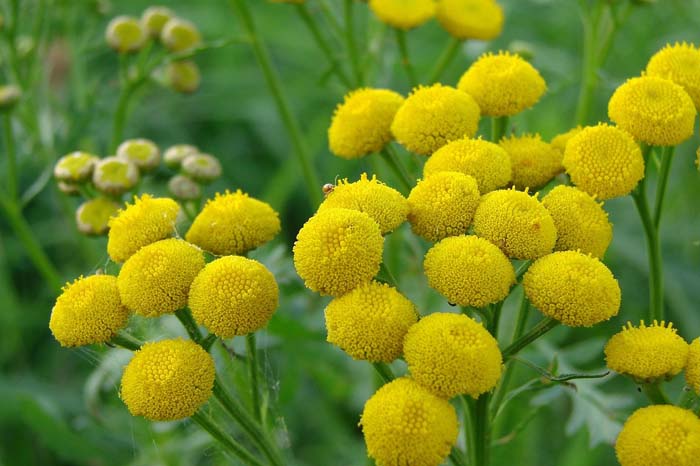
The tansy shouldn’t be consumed in large quantities because it can be toxic. Therefore, most people prefer to grow it as a plant that attracts wildlife and gives the garden a shining yellow color from the blooming hive-like blooms.
Another advantage of having it in your garden is its action as an insect repellent, particularly against mosquitos and ticks. It is an expansive plant because it grows very quickly. It likes well-drained and sunny spots.
31. Thyme
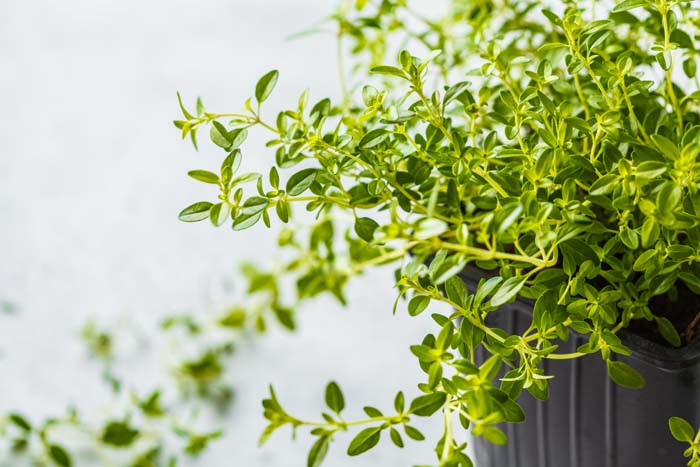
Thyme develops long sprigs which makes it a great choice for hanging baskets. It attracts beneficial insects like hoverflies and that is why it is preferred as a groundcover plant.
Thyme varies in taste and smell so depending on the strength of these two characteristics you can choose among a wide variety of this herb. As far as planting is concerned, the thyme likes well-drained, rich and neutral to alkaline soil.
32. Valerian
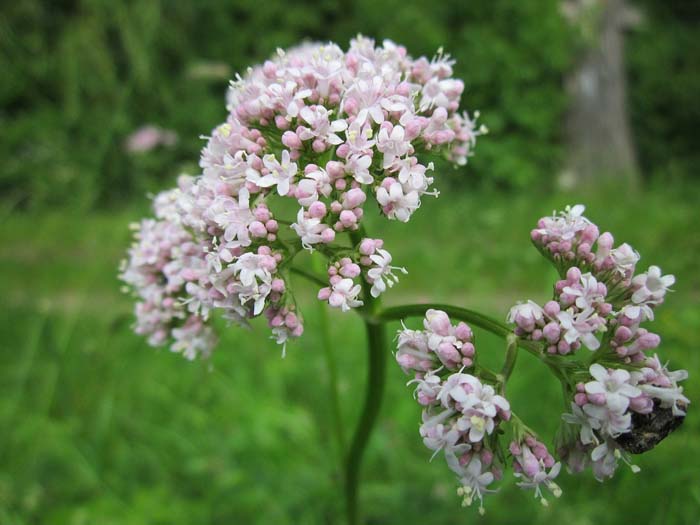
The active ingredients in the extracted oil of the Valerian are used for the preparation of medicines with a relaxing effect. Before planting it, prepare the soil by plowing it at 25 cm depth.
The leaves of the Valeriana can be dried and boiled for tea but of course in moderate quantity.
33. Willow Herb
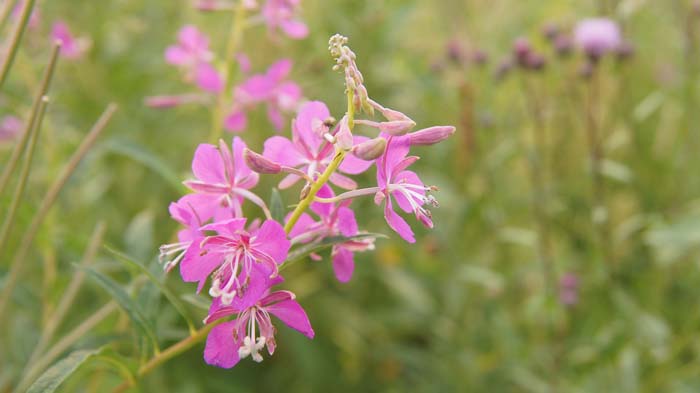
Known also by the name fireweed, this perennial herb is accepted as a weed. Next time you see it self-growing, don’t take it out as it is a useful herb.
It is a great source of vitamins A and C when the young shoot tips and leaves are consumed in salads, for example.
34. Winter Savory
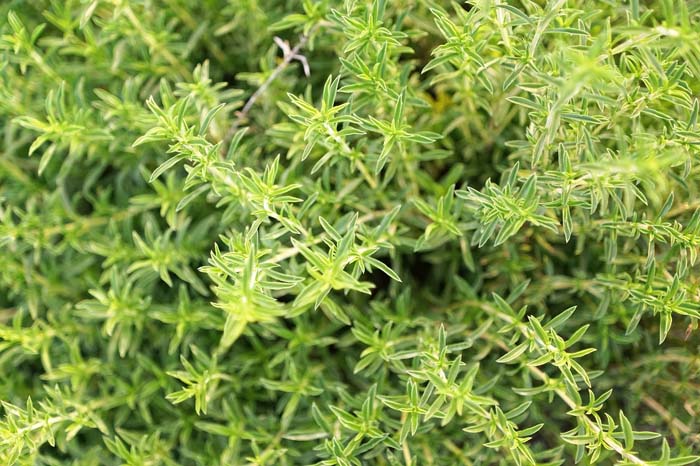
Similar to most of the perennial herbs, the Winter Savory has a dual function- as a repellent and as an attraction of beneficial wildlife. Because of these characteristics, people plant it next to roses and vegetables.
When choosing the best spot for the Savory, make sure that it is well lit by the sun. The soil is not a problem as it is tolerant to any type. The leaves can be used as a spice to dishes or as tea.
35. Yarrow
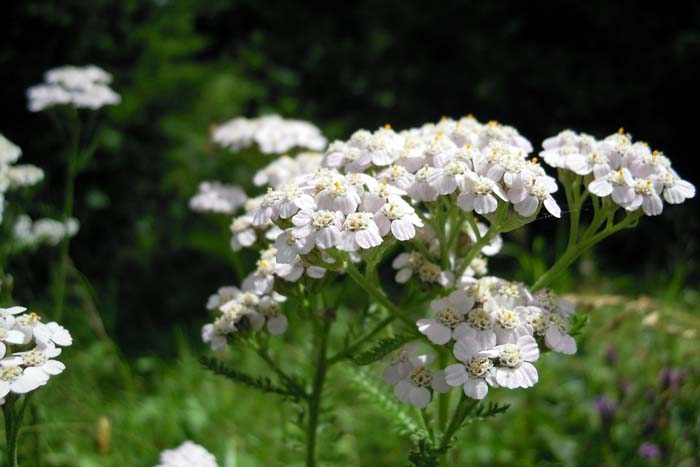
Yarrow is mostly known for its medical contributions. The dried parts can be boiled as tea which has numerous healing effects.
The Yarrow doesn’t require much care. Once planted, you should only water it from time to time.
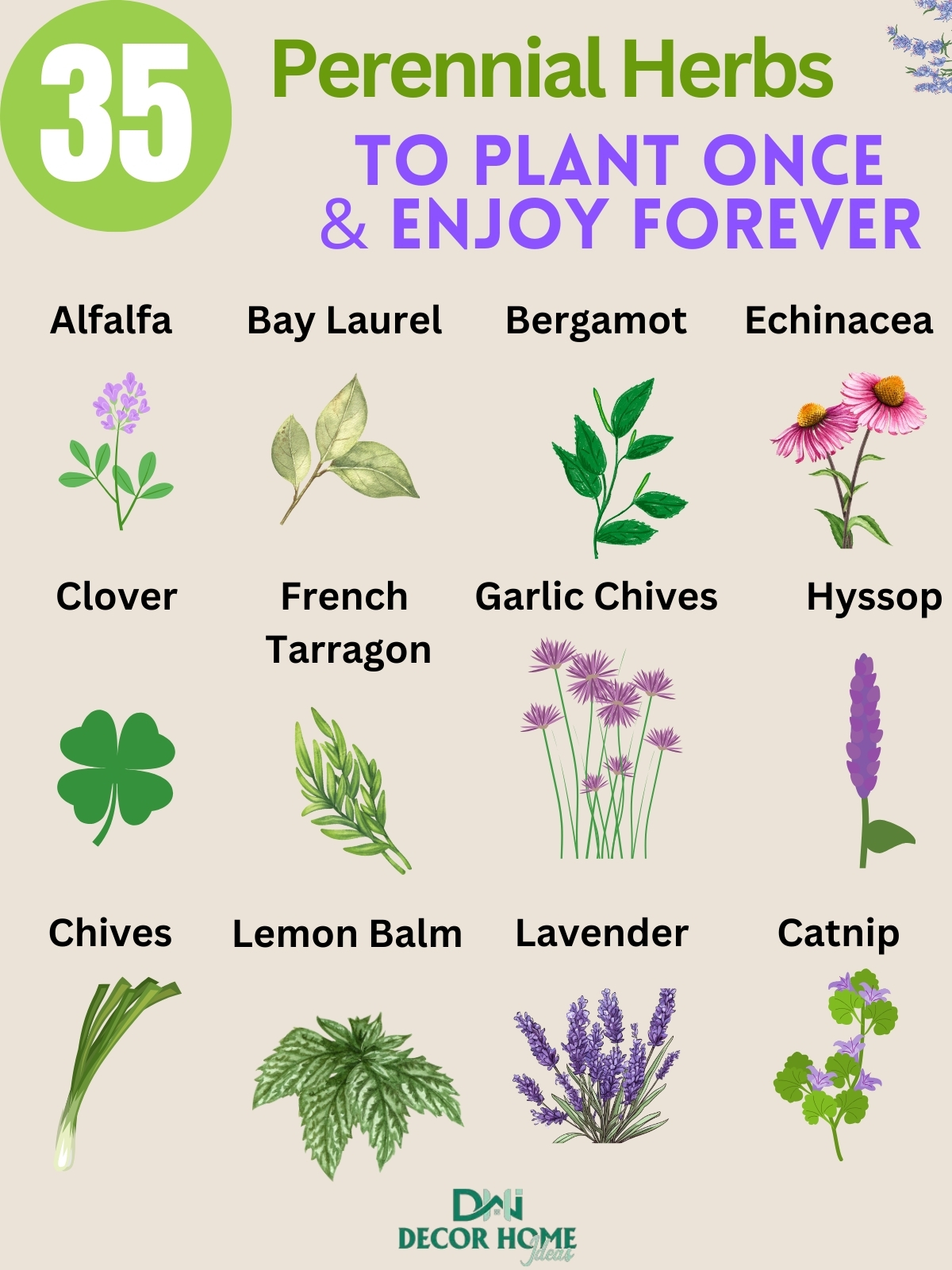
Enjoy a lifetime of fresh herbs with these hardy perennials that return year after year.
Lavender, bay laurel, and lemon balm add fragrance, while chives, garlic chives, and French tarragon enhance culinary dishes.
Echinacea and bergamot attract pollinators, and catnip offers benefits for both cats and gardens.
Perfect for a low-maintenance, ever-growing herb garden!

